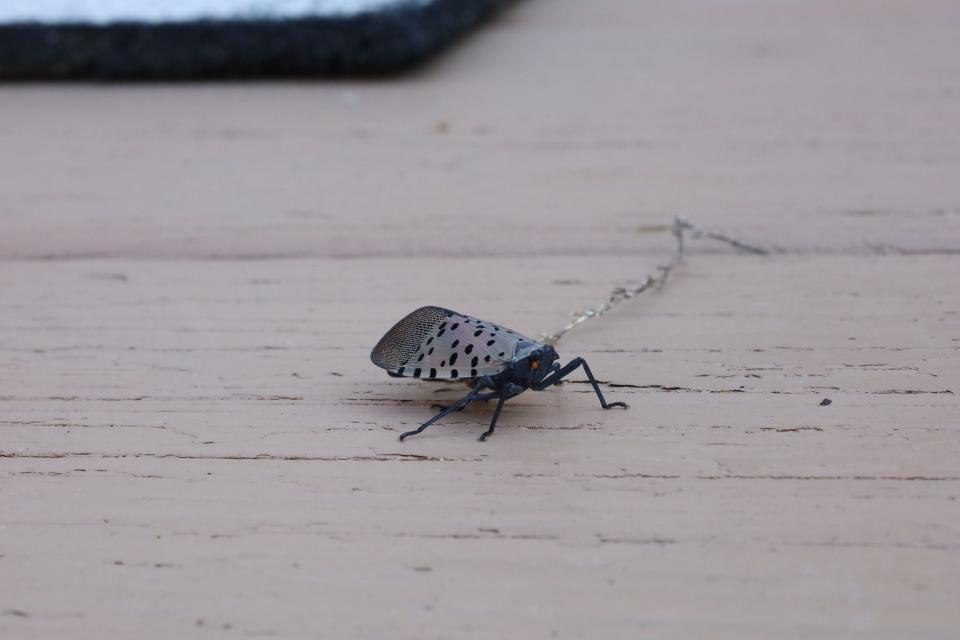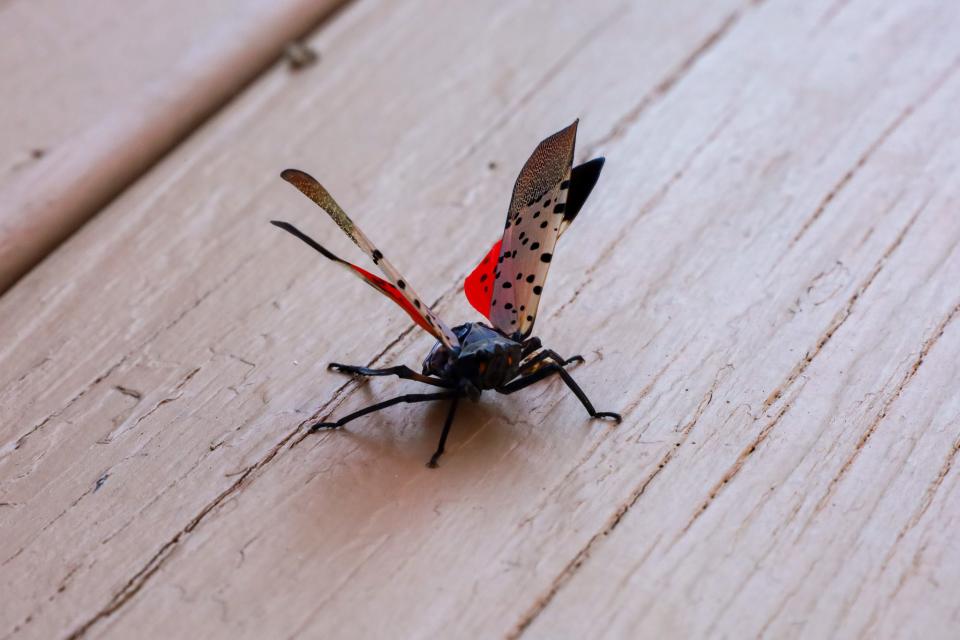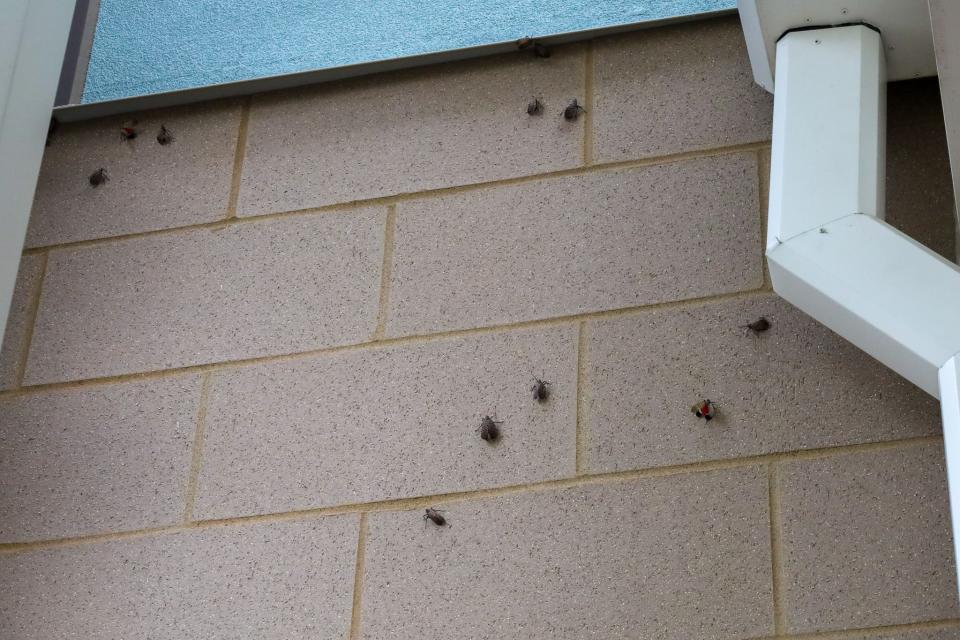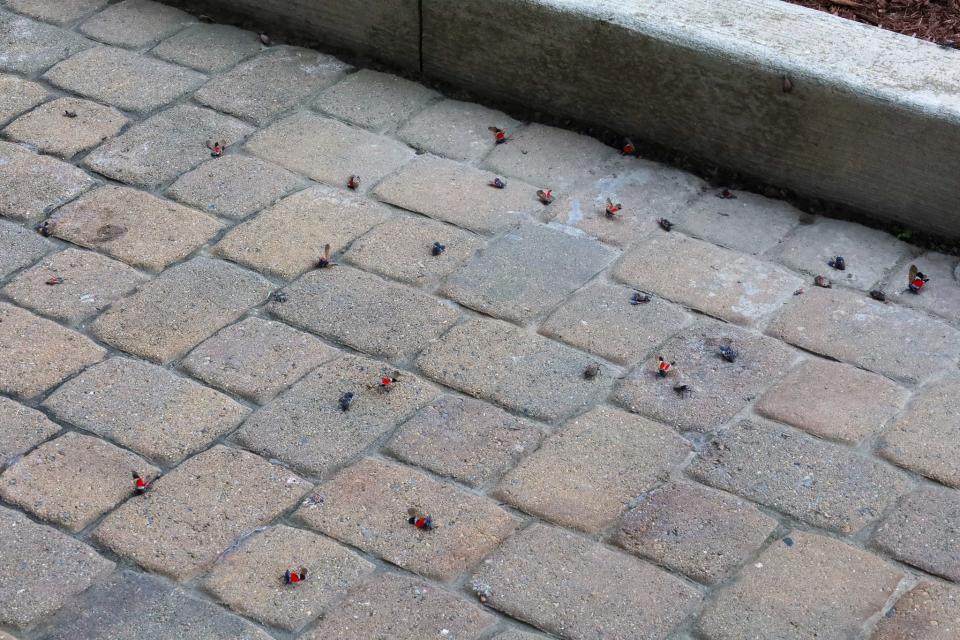Spotted lanternflies return to Beaver County, residents encouraged to avoid home remedies
As the late summer weather begins to turn into fall, the latest "buzz" around Beaver County includes the unwelcome return of the spotted lanternfly.
Residents around the region are once again finding themselves battling swarms of the nuisance insects around their properties and plants as the late summer season spurs the bugs' movements. As the spotted lanternflies continue to hop around these areas, agricultural experts are noticing a rise in the area and encouraging residents to squash the invaders whenever possible.

“The spotted lanternfly is an insect that can take time, energy and money to manage, especially in heavily infested areas,” said Emelie Swackhamer, a horticulture educator with Penn State Extension. “Those dealing with this pest for the first time may be concerned, but arming oneself with knowledge can help.”
What is a spotted lanternfly?
Spotted lanternflies are an invasive species in Pennsylvania and researchers say it is likely the insects arrived in the area through shipping with Asian countries where the bugs are native. The spread of the spotted lanternfly is often helped by commerce, with the bugs moving through interstate and international commerce. The insects were first discovered in Berks County in 2014 and the insects then spread via "hitchhiking" to over 50 counties in Pennsylvania and neighboring states such as New York, New Jersey, Ohio and West Virginia.
While the insects do not bite or sting, posing little to no risk to humans, they are classified as a "nuisance" by environmentalists due to their impact on local plant life and rapid population growth. The spotted lanternfly rapidly feeds on crops like grapevines, hops, ornamental plants and several species of trees important to commerce. The insects may not directly kill other plants, but researchers have listed the spotted lanternfly as a "plant stressor" due to the strain it can put on these ecosystems.
The bugs also leave behind a substance known as honeydew, a sugary excrement that can make outdoor areas sticky and cause mold growth in areas. This substance can be cultivated for honey and sold on the market, with researchers at Penn State saying the product is comparable to bees' honey, but spotted lanternflies spread of the sticky substance in communities can often cause more grievances than potential benefits.

Certain trees can be a draw for spotted lanternflies, with other invasive species of plants making a nice treat for the insects to gather around and grow their nests. Heavily wooded areas with unmanaged trees, such as along roads and behind residential areas, can be one of the reasons swarms of these nuisance bugs will appear in certain communities.
"If there is a lot of Ailanthus altissima (tree of heaven) in an area, they provide a favorable food source and spotted lanternflies can thrive," Swackhamer said. "There are other favorite host plants for the insects, including grapes, black walnut, maple, willow, birch, oriental bittersweet and others."
While infestations began in the eastern parts of Pennsylvania, researchers are noting a rising number of insects in communities across western Pennsylvania. While the exact cause can be a variety of factors, the environment in the region has allowed the bugs to thrive as numbers have started to decline elsewhere.

"In 2023, we have had reports of high populations in some parts of western Pennsylvania," Swackhamer said. "In parts of eastern Pennsylvania, where the lanternfly has been established for a longer time, population numbers are generally not as high. Numbers fluctuate locally based on host plant availability and health, the presence of natural enemies, whether control methods have been implemented in that area, weather conditions and other factors."
There is currently no way to get rid of spotted lanternflies completely, but researchers are actively searching for a safe solution to address the insects and mitigate the damage they cause to plants. For now, researchers say that the insects are likely here to stay until long-term solutions can be developed.
How do you treat your plants and homes for spotted lanternflies?
While the insects are harmless to humans, residents looking to protect their gardens or simply keep the bugs off of their homes do have options to treat spotted lanternflies.
The quickest way to address small populations or single spottings can be stomping on the bugs, but large numbers of the bugs can be addressed with chemicals registered and tested with the Environmental Protection Agency. On store shelves, these products are required to disclose which plants they are safe to use these insecticides on and any potential risks to having the chemicals around people.
"The label provides important information, including directions for safe mixing and use and precautions to protect pollinators and the environment," Swackhammer said. "Additionally, in Pennsylvania, the site where you plan to use an insecticide, for example, 'ornamental trees' or 'vegetable plants,' must be listed on the product label. You must use the rate and application method that corresponds with the site use."

Insecticides for spotted lanternflies come in a variety of methods, ranging from storebought sprays to safe tree injections that kill any of the dangerous bugs looking to snack on the plants. When using these products, residents should read all of the potential hazards and choose an option that is best for their families, pets and plants.
Penn State has also suggested using a device known as a circle trap to catch the insects as they climb trees. The trap will lead the bugs down a tunnel and keep the spotted lanternflies in a container, where they will die. While sticky traps are a common fixture for trees that can be bought at the store, the circle trap can be made at home and prevents other animals, such as birds, from getting trapped or harmed in the traps. Penn State also provides video guides online for how to safely use sticky traps for residents wishing to use that option.
Swackhamer advised against using the "at-home" chemical remedies that often spread online or via social media around this time of year. While these unofficial mixes of household chemicals and kitchen cabinet substances may work for one person or in one household's situation, the risks to other insects, animals and people often outweigh their usefulness.
"Recipes for homemade sprays made from cleaning, automotive, cooking or other household products might be more harmful to the environment or your plants than people realize," Swackhamer said. "By using them, you could burn the leaves of the plants you are trying to protect or harm beneficial insects including pollinators. Some household products may also be harmful if people get them in their eyes, on their skin or inhale them."
This article originally appeared on Beaver County Times: Spotted lanternflies plaguing western Pennsylvania during end of summer

